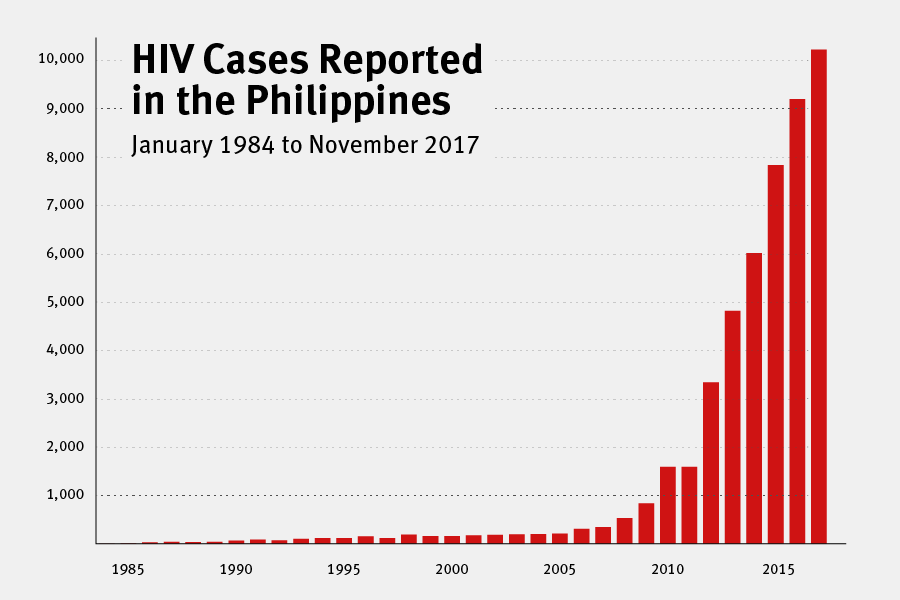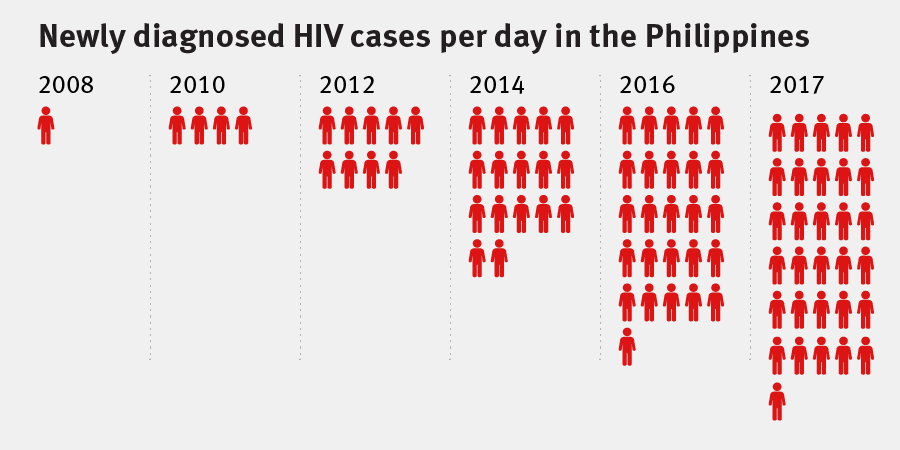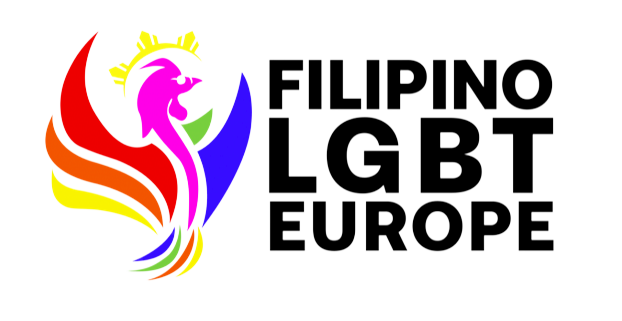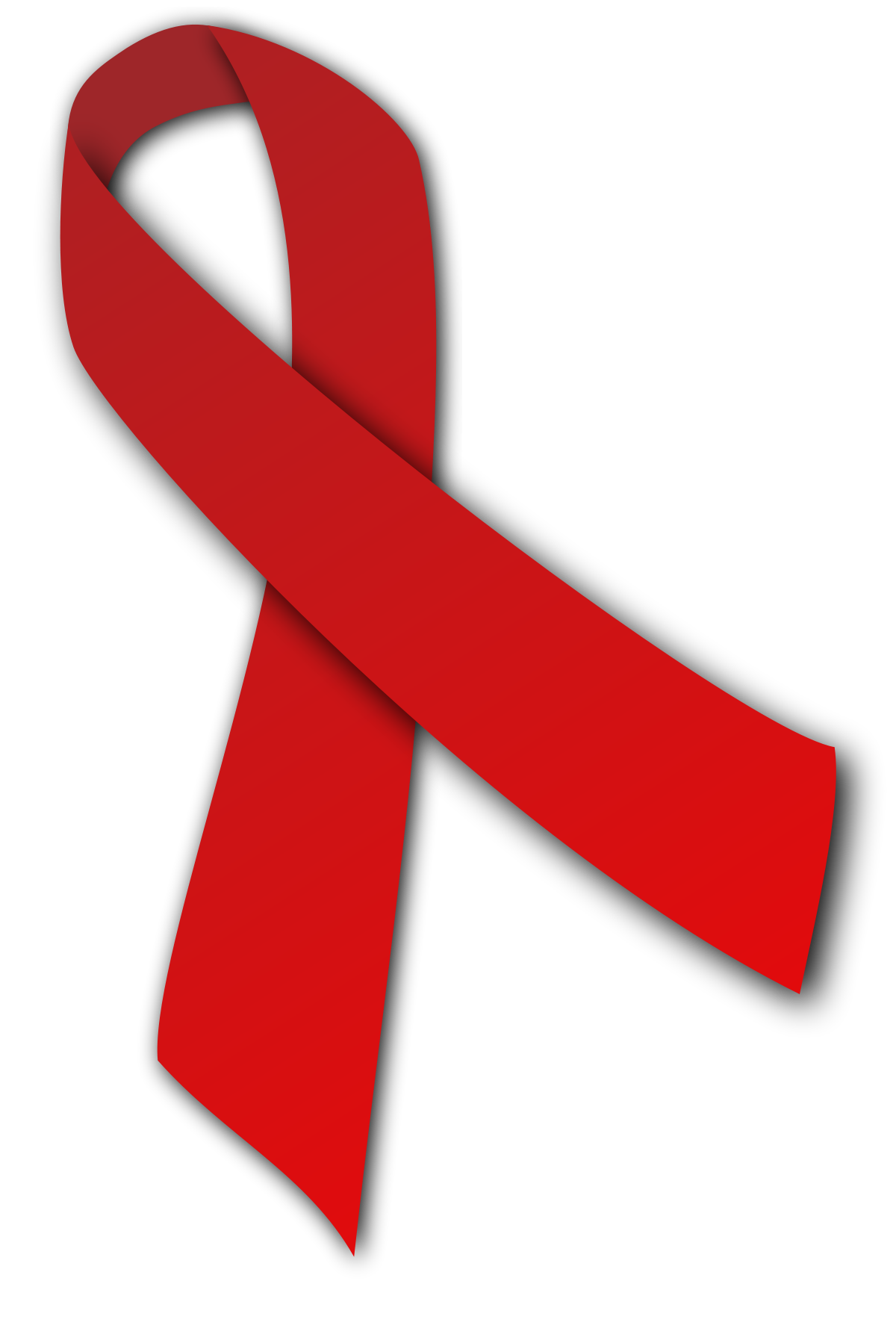Number of HIV cases in 2010
Number of HIV cases as of March 2018
%
New infections occur among men or trans who have sex with men
Alarming rate of new HIV cases

Most new infections, up to 83 percent according to the Philippine government, occur among men or transgender women who have sex with men.
The increase prompted the government to declare a “national emergency” in August 2017. The epidemic is fueled by an environment hostile to policies and programs proven to help prevent HIV transmission. Government policies create obstacles to access to condoms and HIV testing and limit educational efforts on HIV prevention.
Note: Excerpt from Human Rights Watch report

New HIV Cases daily in 2017
New HIV Cases daily in 2008
HIV/AIDS epidemic trends in the Philippines
(January 1984 – March 2018)
HIV cases reported to the HARP [Table 1]. Ninety-three percent (49,731) were male and 3,450 (6%) were female;
there were no data on sex for 11 cases. The median age was 28 years old (age range: 1 year – 82 years; no data on age
for 73 cases). More than half (27,228 or 51%) were from the 25-34 year age group while 14,938 (28%) were youth 15-
24 years old [Figure 6]. Seventy-eight percent (41,575) of all the 53,192 diagnosed cases in the Philippines were
reported from January 2013 to March 2018 [Table 1]. Ten percent (5,484) of the total ever reported cases had clinical
manifestations of advanced infection at the time of reporting (WHO clinical stage 3 & 4). From January to March 2018,
16% of the newly diagnosed cases were reported to had advanced infection.
Modes of transmission
A total of 138 children (less than 10 years old), eight adolescents (10-19 years old), and one adult foreigner (22 years old) were reported to have acquired HIV through other-to-child transmission.
From 1984 to 2006, the predominant mode of transmission was male-female sex. From 2007, the trend shifted to sexual contact among MSM as the predominant mode of transmission and has remained as such to the present. From January 2013 to March 2018, 83% (34,301) out of the total (41,575) newly diagnosed cases were among MSM.
From 1984 to 2009, transmission through sharing of infected needles were <1% of the total cases reported. The proportion of cases of injecting drug users (IDU) increased sharply in 2010, at 9% (147) of the total cases reported that year. The proportion of new cases among people who inject drugs decreased to <6% of the total cases in succeeding years.
Note: Excerpt from HIV/AIDS & ART Registry of the Philippines, March 2018 report
Stigma associated with contraceptives

The Filipino LGBT Europe
Kloveniersburgwal 9-HS,
1011 JT Amsterdam,
The Netherlands
Email: info@FilipinoLGBT.eu Registered Foundation
KvK no. 71104224
BTW no. NL858580883B01
